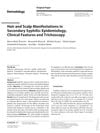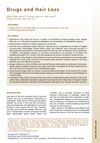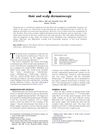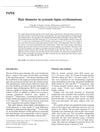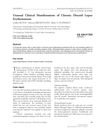Hair and Scalp Changes in Cutaneous and Systemic Lupus Erythematosus
June 2018
in “
American Journal of Clinical Dermatology
”
alopecia scarring alopecia discoid lupus erythematosus lupus panniculitis non-scarring alopecia systemic lupus erythematosus trichoscopic features histopathological features direct immunofluorescence antimalarials corticosteroids methotrexate dapsone rituximab ustekinumab IVIG lupus hair Linear and Annular Lupus Panniculitis of the Scalp SLE DLE
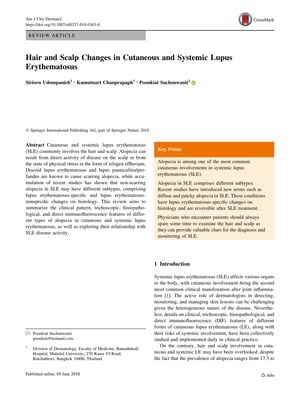
TLDR Hair loss is common in lupus patients and can be permanent or reversible, depending on the type, with various treatments available.
The document reviews the hair and scalp changes in patients with cutaneous and systemic lupus erythematosus (LE), noting that alopecia is a common symptom with a prevalence ranging from 17.3% to 85.2%. It distinguishes between scarring alopecia, often caused by discoid lupus erythematosus (DLE) and lupus panniculitis/profundus, and non-scarring alopecia, which can be reversible with SLE treatment. The review details the clinical, trichoscopic, histopathological, and direct immunofluorescence features of these alopecias, their relationship with SLE disease activity, and their impact on quality of life. It emphasizes the importance of examining hair and scalp for diagnosis and monitoring of SLE. The document also discusses treatment options, including antimalarials, corticosteroids, methotrexate, dapsone, rituximab, ustekinumab, and IVIG, and notes that while some hair loss may be reversible, other forms can lead to permanent alopecia. Specific conditions such as lupus hair, lupus panniculitis/profundus, and Linear and Annular Lupus Panniculitis of the Scalp (LALPS) are described, with LALPS being a rare, non-scarring form of alopecia. The document does not provide specific numbers of people involved in the studies it references.

